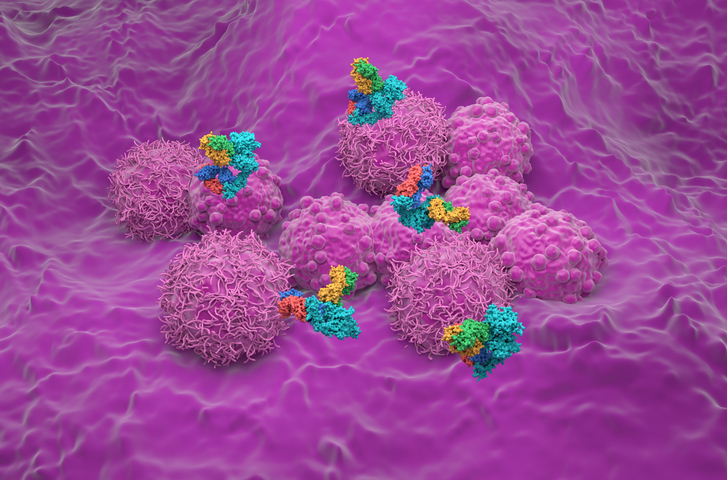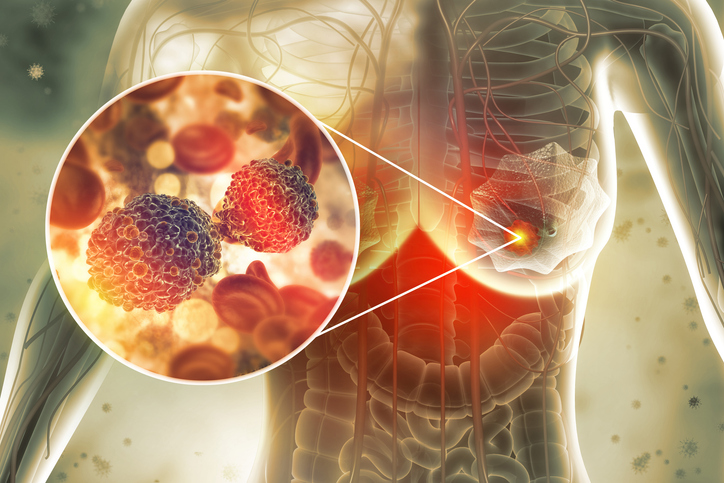
When breast cancer cells are harvested through surgery or biopsy, they are tested to see if they possess receptors for estrogen or progesterone hormones. These hormones promote the growth and development of cancer when they bind their receptors, however, these receptor proteins are not present in all cases. A cancer is referred to as hormone receptor-positive or hormone-receptor negative based on the presence or absence of these receptors, with each case requiring different treatment options.
There are several terms used to describe a breast cancer patient’s hormone receptor status. Estrogen receptor-positive (ER+) and progesterone receptor-positive (PR+) refer to cancers with each respective hormone receptor present. Hormone receptor-positive (HR+) cancer is an umbrella term used to refer to cancers with one or both of these receptors present. Hormone receptor-negative (HR-) breast cancers are those with neither of these hormone receptors present. Preventing these hormones from binding their respective receptors through treatment can help prevent the growth and spread of the cancer.
Hormone receptor status and treatment options
The physician’s approach to treating breast cancer depends on the patient’s hormone receptor status. If a patient’s cancer possesses one or both of these hormone receptors, then hormone therapy drugs can be administered to lower estrogen/progesterone levels or inhibit their binding to their receptors. This is an effective treatment option for those with HR+ breast cancer, but this approach has no effect on HR- cases. With roughly 2 out of every 3 breast cancer cases presenting at least one of these receptors, hormone therapy drugs apply to a majority of breast cancer cases, but not all.
Testing
To identify estrogen and progesterone receptor presence, an immunohistochemistry (IHC) test is performed on a sample of the patient’s cancer cells. The patient is deemed to be HR+ if at least 1% of the cells evaluated have estrogen and/or progesterone receptors. If the cells do not meet this threshold, the cancer is classified as HR-.
Hormone receptor-positive (HR+)
HR+ breast cancers typically progress slower than HR- cancers, with outcomes of HR+ patients typically being better in the short-term. HR+ cases present risk of recurrence many years after treatment, however.
Hormone receptor-negative (HR-)
Being that they are not sensitive to treatments targeting hormones and their receptors, HR- cancers tend to grow faster than those that are HR+. If a case of HR- cancer recurs, it is often seen in the first few years after treatment. HR- breast cancers are more frequently seen in women who have not gone through menopause.
Triple-negative and triple-positive breast cancers
Another contributor to breast cancer growth is the excessive presence of the human epidermal growth factor receptor 2 (HER2) protein. In patients who express HER2 excessively, therapies that target this protein can serve as effective treatments. Breast cancer patients who do not have elevated HER2, however, cannot be treated in this fashion. When a patient is HR- in addition to having non-elevated HER2, they meet the criteria for triple-negative breast cancer.
Cases of triple-negative breast cancer are more prevalent in women younger than 40 years of age, who are African American, or possess a mutated BRCA 1 gene. These cancers grow and spread faster than most other forms of breast cancer, being that they do not respond to hormone therapy or drugs targeting HER2. For these patients, chemotherapy and radiation are potential treatment options.
On the other end of this spectrum is triple-positive breast cancer, which contains ER, PR, and HER2 positive traits. Triple-positive cancers can be treated by both hormone and HER2 targeted therapies.







 © 2025 Mashup Media, LLC, a Formedics Property. All Rights Reserved.
© 2025 Mashup Media, LLC, a Formedics Property. All Rights Reserved.